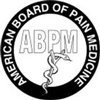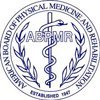Home »
Blog » Pain Management
| Stem Cell, PRP, Acupuncture in Queens & Long Island, New York
Pain Management | Stem Cell, PRP, Acupuncture in Queens & Long Island, New York
Persistent or newly developed pain in the lower back after pregnancy, also known as postpartum back pain, usually lasts for 6 months but may continue up to a decade. Postpartum back pain mostly occurs while performing activities that involve body movements, such as walking, lifting, bending, and carrying the new baby, and may be relieved with rest, exercise, and home treatments. The type and severity of pain depend on the underlying cause.
Read more
The treatment of back pain in pregnancy depends on the stage of pregnancy, underlying causes, aggravating factors, and the presence of other medical conditions, such as diabetes or heart problems. Both medical and psychological treatments may be warranted in some cases when the ability to perform daily activities and participate in social events is significantly affected, impairing the quality of life.
Read more
The cause of back pain in pregnancy is often considered multifactorial, meaning several factors act concomitantly on various structures in the lower body, causing pain. These factors are commonly recognized as the anatomical, postural, vascular, and hormonal changes that take place naturally during pregnancy. While most of these changes are considered normal, rarely, a few causes of lower back pain in pregnancy may indicate serious conditions, some of which may even be life-threatening.
Read more
Pregnant women may experience back pain that is localized to the lower back area or radiates into the buttock, thigh, and legs, causing or mimicking sciatica symptoms. The pain may be constant, get worse with activity, interfere with sleep, and/or reduce overall functioning. While the symptoms usually resolve spontaneously after delivery, some conditions may remain as chronic disorders. Women with pre-existing lower back problems are typically at a higher risk of developing pregnancy-related back pain.
Read more
A range of natural biological changes take place in a woman’s body during pregnancy, which directly affects the musculoskeletal system and may become a potential cause of back pain and related issues, such as leg pain. Pregnancy-related changes typically involve the joints and connective tissues, making them loose, pliable, and soft.
Read more
Running puts, a high level of repetitive stress on the back, and for those with lower back problems it is particularly important to take measures to reduce the strain on the lower back. In general, the following tips are advisable for runners, especially for those who are susceptible to low back pain or leg pain/sciatica: Do a thorough warm-up before beginning a run...
Read more
Generally, episodes of lower back pain caused by a muscle strain or other soft tissue injury get better within two to three weeks. Suppose pain lasts longer than that the patient may want to be evaluated by a spine specialist. This would give them some time frame.
Herniated Disc - A herniated disc is a condition where the disc itself has begun to bulge or rupture and begins to put pressure around a nerve.
Read more
Running is an activity that involves repetitive stress and impact, sometimes for a long duration. People with an underlying lower back problem can find running or jogging worsens their pain or leads to additional types of pain, such as sciatica (leg pain, weakness, or numbness). When running or jogging leads to more or additional back pain, it is important to know when to seek treatment and what types of treatment to expect.
Read more
In the summer, more athletes participate in outdoor sports such as basketball, soccer, baseball, flag football, biking, and hiking. With this in mind, it’s important to remember that activities involving more running, heavy impact, falling, or overuse can be accompanied by a higher risk of hip injuries in athletes and weekend warriors.
Read more
Physical therapists may use certain aids and techniques to supplement active treatment for sciatica. These treatment aids typically consist of specialized devices and equipment. While some of these aids are used at the therapist’s office, others may be used to relieve pain at home. In treating sciatica, these aids may promote blood flow, reduce muscle spasms, and decrease pain.
Read more
Love this Post? Spread the World
























